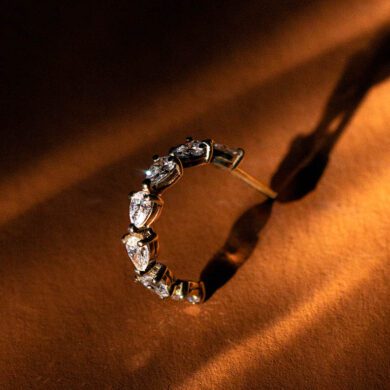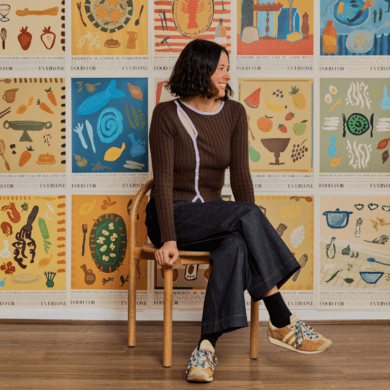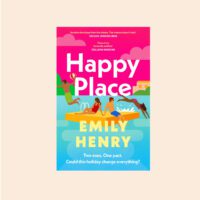When was the last time you came across a proper chick lit novel? You know the kind: cutesy pink cover featuring a cupcake, maybe a martini glass or two; a main character who is a shopaholic or magazine editor (or both).
It was likely at an op shop or holiday house or the home of your middle-aged aunt, and not in the window of a bookshop, right? That’s because chick lit – the type of fiction popularised by Candice Bushnell and Helen Fielding – has been out of fashion for longer than skinny jeans.
But stories about the minutiae of women’s lives which position women as the heroines (the basic criteria of chick lit) are still being told. Only they’re no longer called chick lit. And there are very few cupcakes or stilettos to be seen.
That’s because chick lit – the type of fiction popularised by Candice Bushnell and Helen Fielding – has been out of fashion for longer than skinny jeans.
Thanks to some smart rebranding, the books formerly known as chick lit are now simply labelled ‘romance’ or ‘general fiction’. And, partly as a result, the genre is racing back up the bestseller lists, with sales of romance novels in Australia up by 77 per cent between 2021 and 2022, according to Neilsen BookScan.
“The romance market is by far the biggest book market in the world and reflects the fantasies of women of all ages,” says Georgia Nicholls, who, along with Dr Amy Matthews and Kathleen Stanley, recently launched Love on Campus – a podcast which interrogates and celebrates popular romance.
In fact, it’s younger women driving the surge in romance sales. “Young readers (especially those on TikTok) are no longer ashamed to be seen reading romance,” says Rachael Johns, author of the upcoming rom-com The Other Bridget and one of Australia’s bestselling romance novelists.
“They’re embracing the genre of love, posting about it online, fangirling over the authors, causing books to go viral and this has had a knock-on effect. We’re now seeing bookstores who either didn’t even stock romance before or shelved it in a deep, dark corner, putting romance novels at the front of store and clearing shelf space for massive romance sections.”
The popularity of romance novels isn’t simply an Australian phenomenon. In the US, where romance novels are currently more popular than they have been in a decade, the bestselling book of the year is a rom-com. That book is Emily Henry’s Happy Place, which – with its brightly coloured cover – looks suspiciously like the chick lit of yore.
So, why the rebrand? After the late ‘90s and aughts when chick lit was absolutely everywhere, the genre suffered an image problem, which many publishing insiders now put down to internalised misogyny.
“Books consumed and enjoyed primarily by women are often sidelined as less intellectually worthy or highbrow. This effect is doubled when they’re massively popular – I think lots of people even in the industry are guilty of this,” says Caitlan Cooper-Trent, a literary agent at Curtis Brown Australia.
Books consumed and enjoyed primarily by women are often sidelined as less intellectually worthy or highbrow.
Frustratingly, this is nothing new. As Cate Paterson, Publishing Director at Allen & Unwin and Atlantic Books Australia, points out: “Jane Austen was not revered in her lifetime”. (In other words, all female fiction writers need to do to be taken seriously is wait several hundred years.)
The debate over the merits of chick lit reached its nadir in 2010 with an online feud between revered author Jonathan Franzen and chick lit writer Jennifer Weiner. At the time, authors and critics were divided over whether Franzen’s novel (Freedom) deserved as much coverage as The New York Times gave it, which included a review in the daily paper, another in the weekly format, an article covering the book launch party – and an extra column by David Brooks for good measure.
Weiner referred to it as “critical fawning” and argued that The Times could have shared some of that praise and valuable real estate with other books. Maybe those that needed it more. Like, say, books written by women and about women.
When a man writes about family and feelings, it’s literature with a capital L, but when a woman considers the same topics, it’s romance, or a beach book.
When asked in a HuffPost interview why popular fiction by women tends to be critically overlooked, Weiner said: “I think it’s a very old and deep-seated double standard that holds that when a man writes about family and feelings, it’s literature with a capital L, but when a woman considers the same topics, it’s romance, or a beach book – in short, it’s something unworthy of a serious critic’s attention.”
Fast forward a decade or two, and in this post-MeToo, post-BlackLivesMatter world, things have somewhat improved. Romance is no longer automatically dismissed as bad literature, and the genre has evolved; where chick lit books dealt almost exclusively in white, middle-class women’s dilemmas, new, more inclusive categories, including queer love stories and novels by Indigenous authors, are jostling for space in the romance section.
Clare Fletcher, whose second rom-com Match Love publishes this month, says that romance novels have been underestimated for too long. “I think women’s fiction has always been a trojan horse for big topics and themes, and romance is often at the forefront of evolving sexual/relationship mores,” she says. “Women’s agency and pleasure, consent and contraception are non-negotiables for romance now.”
I think women’s fiction has always been a trojan horse for big topics and themes.
Beyond cute covers and progressive politics, there’s likely another factor contributing to the popularity of romance novels: after years of lockdowns and pandemic-related crises, a guaranteed happy ending suddenly has even more appeal. “[Rom-coms offer an] escape from reality, a happy ending, the experience of an emotionally intense experience,” agrees Paterson.
The Love on Campus women think that through its aspirational representation of love, intimacy and sex, romance offers its readers an “idealised world where relationships are healed by respect, and clear communication. It’s about seeing yourself as the main character”.
But above all else, it’s the simple joy these books offer that brings readers back time and time again. “Enjoyment is paramount. There isn’t the concern that an author is going to “kick their knees out from behind them (to quote Caroline O’Donoghue),” says Cooper-Trent. “Good literature shouldn’t be a punish.”
And that is something I think we can all agree on.













No Comments